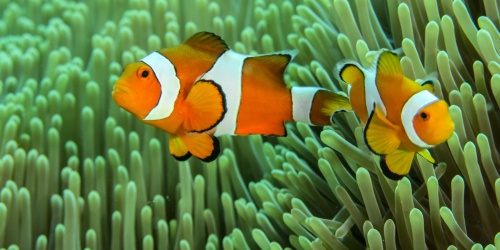
Hermit Crab - Photo yu-ki_d7500 / Adobe
What is a hermit crab? Hermit crabs (Pagurus species) are different to most other crab species, as their soft bodies are not protected by a hard shell. Instead, they find homes in the shells of other molluscs, discarding these and finding bigger ones as they grow. This habit and their cute appearance have made them a favourite animal of many children.
What do they look like: They may be brightly coloured. Their eyes are on stalks which protrude from their shelly homes. Some species have a huge right claw, some have a huge left claw, whereas in others the first pair of claws is equal in size. Depending on the species, Western Australian hermit crabs are small (only reaching a maximum length of six millimetres) or reasonably large (up to 13 centimetres long).
Where do they live? Hermit crabs live in all of Western Australia’s marine parks and reserves.
What they eat and how: Hermit crabs are largely scavengers, so they are not particularly fussy eaters as they usually consume dead and decaying animals.
Threats: Unfortunately, people are the biggest threat to these creatures, as many thousands of them are accidentally collected with shells every year and die a slow death without water or food, and others are taken deliberately for pets. The larger shells which are needed by hermit crabs growing out of their shells are also prized by shell collectors, so this also causes problems for these animals.
Behaviour: Hermit crabs are shy and expert at hiding, and will immediately cover themselves with their shell homes if disturbed.
How you can protect the hermit crab: Before collecting shells on the beach, always check to make sure there is no hermit crab inside before taking it home. Better still, do not collect shells at all, but leave them on the beach to provide hermit crab homes (shell collecting is not permitted in most marine parks - check the marine park brochure to find out). Hermit crabs make popular pets, but you should never ever take one from the wild. They should remain in its natural habitat to form an important part of the marine food chain and, if removed, are likely to die within days in any case.



























